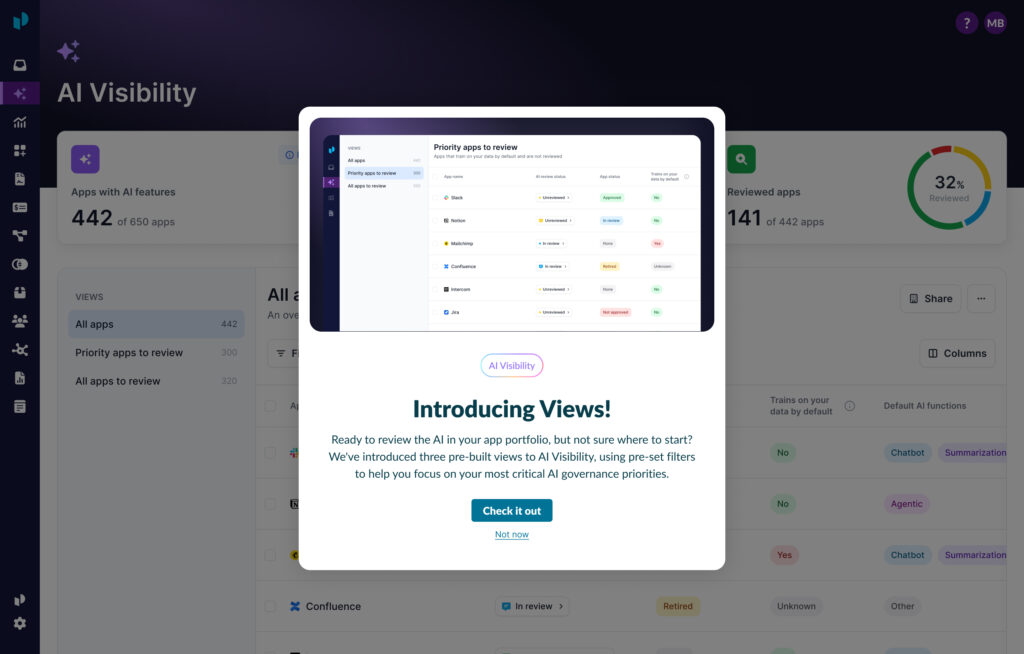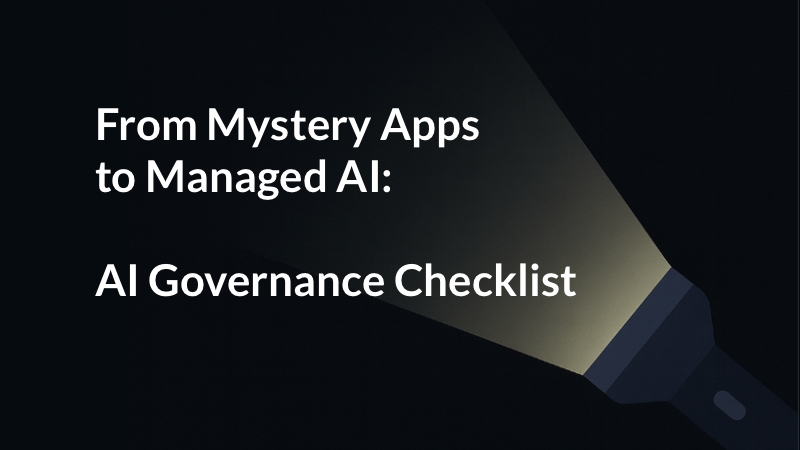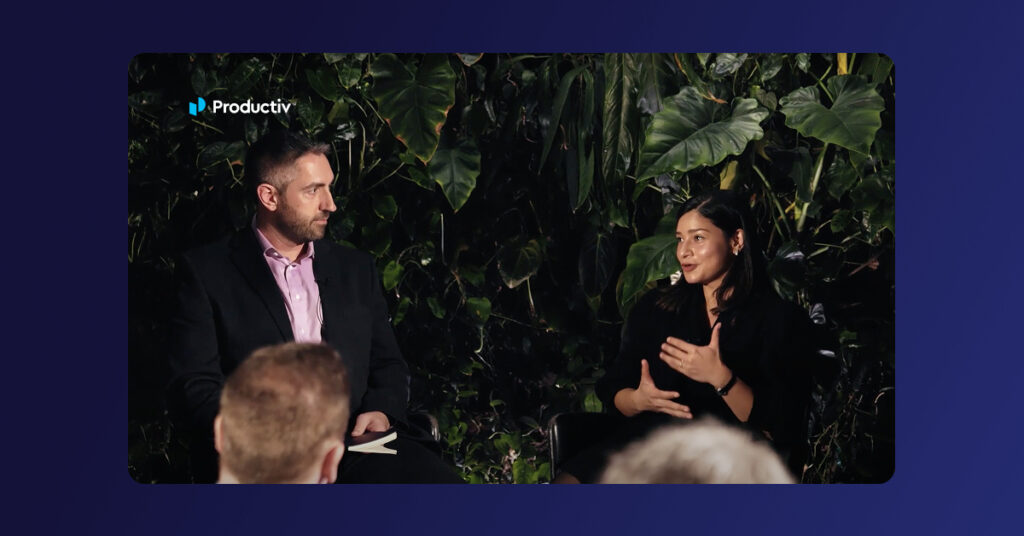
What is Procurement? Key terms and tips for professionals to know
In the ever-evolving business landscape, where agility and cost efficiency are paramount, effective procurement practices hold immense value. In 2023, the average SaaS portfolio decreased to 342 applications, signaling an upward trend of consolidation within Procurement processes. But what exactly is procurement, and how does it impact an organization’s success?
What is Procurement?
Procurement, in essence, is the strategic acquisition of goods or services from external sources to fulfill an organization’s needs. It encompasses the entire lifecycle of acquiring these resources, from identifying business needs to negotiating contracts, managing vendor relationships, and ensuring payment. Strategic procurement ensures that organizations secure the right resources at the right price, while mitigating risks and fostering compliance.
Why is Procurement important?
Procurement plays a critical role in an organization’s success. A few of the key benefits that intelligent procurement can deliver includes:
- Cost savings: Effective procurement strategies can significantly reduce costs by securing the best possible deals from vendors. Through data-led discussions, healthy vendor relationships can lead to improved negotiation conversations and better ROI for both teams involved. Skilled procurement professionals leverage market knowledge, competitive bidding processes, volume discounts, and intelligent analysis of their company’s data to achieve optimal cost efficiency.
- Risk management: A robust procurement process mitigates risks associated with unreliable vendors, product quality issues, data security, and price fluctuations. By carefully evaluating potential vendors, diversifying sourcing options, and negotiating clear contract terms, procurement minimizes potential disruptions and ensures the security and consistency of acquired SaaS applications and other services.
- Efficiency: Streamlined procurement practices minimize administrative burdens and ensure timely acquisition of required goods and services. Automating routine tasks — which can be achieved by integrating Artificial Intelligence (AI) with a SaaS Management Platform — like aligning team members around data, frees up valuable time and resources within the organization, allowing teams to focus on core business activities.
- Compliance: Procurement ensures adherence to company policies and practices. An effective procurement function safeguards the organization’s data and minimizes the risk of shadow IT, unused licenses, and unnecessary spend.
The Procurement process: A step-by-step guide
The Procurement process typically involves several key stages, each playing a crucial role in securing the optimal SaaS applications:
- Identifying Needs: The initial stage involves determining the specific needs of each department within an organization. It often includes analyzing internal requests, forecasting future requirements, and aligning procurement activities with the organization’s overall strategy.
- Sourcing and vendor selection: Next, it’s time to identify potential vendors who can meet the organization’s needs. Consider researching the market, shortlisting qualified vendors, and evaluating them based on factors like cost, quality, reliability, past performance, and their ability to deliver on the required specifications.
- Request for Proposal (RFP) or Quotation (RFQ): Shortlisted vendors are issued an RFP outlining the organization’s requirements and requesting their proposals, including pricing and terms. The RFP should clearly define the scope of work and payment conditions.
- Evaluation and negotiation: Received proposals are evaluated based on pre-defined criteria, considering not just cost but also factors like vendor qualifications, risk profile, and potential for long-term collaboration. Negotiation with shortlisted vendors may occur to secure the most favorable terms in terms of price and contract conditions.
- Contract award and management: A contract is awarded to the chosen vendor, outlining expectations, terms, and payment conditions. Ongoing management of the vendor relationship ensures adherence to the contract, including quality control measures, performance reviews, and communication regarding any changes or adjustments to the requirements.
- Onboarding and payment: Depending on the size and scope of the application, vendor teams will work with your organization to efficiently execute installation of the application. Payment is then processed to the vendor in accordance with the agreed-upon terms.
- Record the process: Tracking each step of the Procurement process is key to ensuring success. When it comes time for renewals, reflecting back on historical data can greatly impact negotiations.
Procurement vs. purchasing
While often used interchangeably, there’s a subtle distinction between procurement and purchasing. Purchasing refers to the narrower act of acquiring goods or services, typically involving placing orders and processing payments. It’s a transactional process focused on the immediate fulfillment of a need.
Procurement, on the other hand, encompasses the entire strategic process, including identifying needs, sourcing, negotiation, and managing the vendor relationship throughout the lifecycle. It’s a broader function that ensures the organization acquires the right resources at the optimal cost and fosters long-term value creation.
Within the Procurement function, there are also two different categories to consider: direct and indirect procurement. They each serve a distinct purpose within the organization and it’s critical to carve out a separate strategy for both functions as they relate to your business.
The future of Procurement
Driven by advancements in technology and the ever-evolving global business landscape, Procurement will continue to transform to meet business growth and achieve a competitive advantage. Some key trends that will likely shape the future of Procurement include:
- Utilizing the power of data and analytics: The increasing availability of vast datasets and sophisticated analytics tools empowers Procurement teams to get more out of their data. By gaining a clear understanding of spending patterns, vendor performance metrics, and critical market trends, Procurement professionals can make informed strategic decisions throughout the lifecycle, from selecting the right vendor to negotiating favorable contract terms when it comes time for renewals.
- Integration of Artificial Intelligence (AI): AI is expected to become deeply embedded within Procurement processes, automating complex tasks and providing intelligent data for streamlined decision-making. AI-powered systems can assess potential risk, provide quick answers to high level questions, and forecast company-wide app usage with remarkable accuracy. This integration will not only optimize efficiency but also elevate the strategic capabilities of Procurement functions, allowing them to focus on more value-added activities.
- Sustainable Procurement: Sustainability is no longer a peripheral concern; it’s becoming a central consideration in Procurement strategies. Organizations are increasingly prioritizing environmental and social factors when making purchasing decisions. Moving forward, we can expect more rigorous sustainability assessments implemented throughout the sourcing process — both for physical goods and SaaS products.
- Collaborative vendor relationships: The future of Procurement depends largely on fostering strategic partnerships with vendors. Moving beyond transactional interactions, there’s a growing emphasis on developing collaborative ecosystems that nurture innovation, flexibility, and mutual growth. Technology will play a crucial role in facilitating these collaborative networks, enabling seamless communication, information sharing, and joint problem-solving between organizations and their suppliers.
- Digital Procurement platforms: The rise of cloud-based procurement platforms is revolutionizing the way organizations manage their procurement activities. These platforms offer comprehensive end-to-end solutions, encompassing everything from vendor and contract management to insightful and actionable data analytics. Digital platforms — or SaaS Management Platforms — not only streamline workflows and boost efficiency but also enhance scalability, making them a valuable asset for businesses of all sizes seeking to optimize their procurement operations.
- Tailored Procurement strategies: As industries evolve and business models become increasingly dynamic, a one-size-fits-all procurement approach is no longer effective. The future necessitates customized procurement strategies that are specifically tailored to address the unique challenges, business models, and market conditions of each organization. Actionable analytics and AI-powered insights will be crucial in enabling the development and implementation of these customized approaches, ultimately optimizing procurement activities and fostering long-term competitive advantage.
By embracing these trends and technologies, Procurement can transform from a cost-centric function to a strategic driver of organizational success. Understanding what Procurement is and what the future holds provides immense potential for professionals to leverage data, technology, and strategic partnerships to unlock significant value for their organizations.
About Productiv:
Productiv is the IT operating system to manage your entire SaaS and AI ecosystem. It centralizes visibility into your tech stack, so CIOs and IT leaders can confidently set strategy, optimize renewals, and empower employees.





